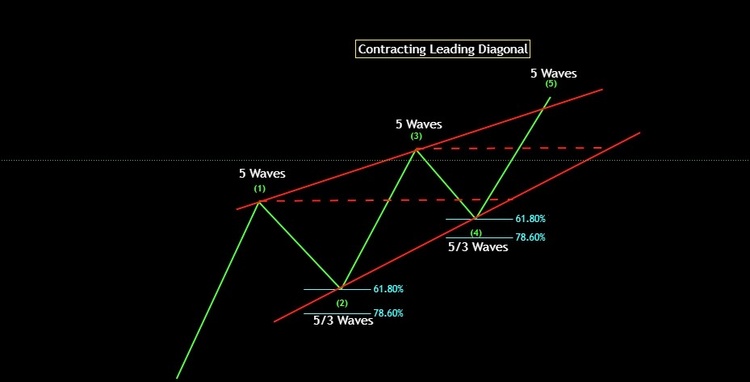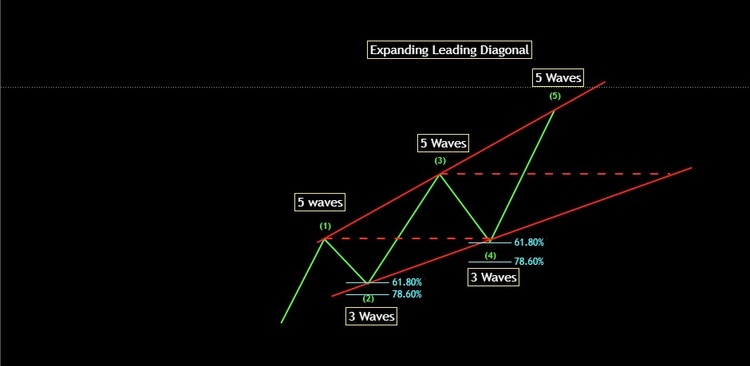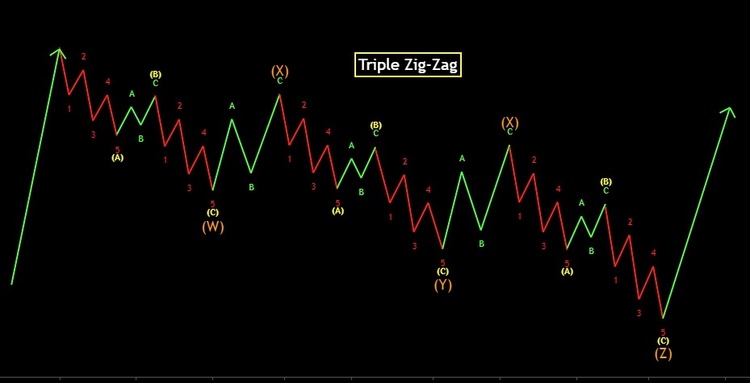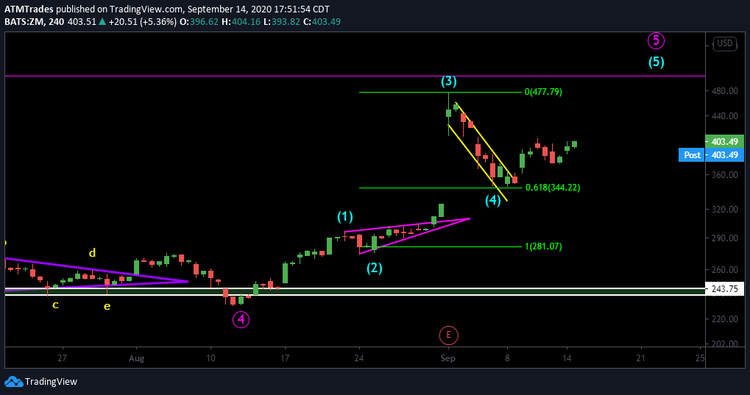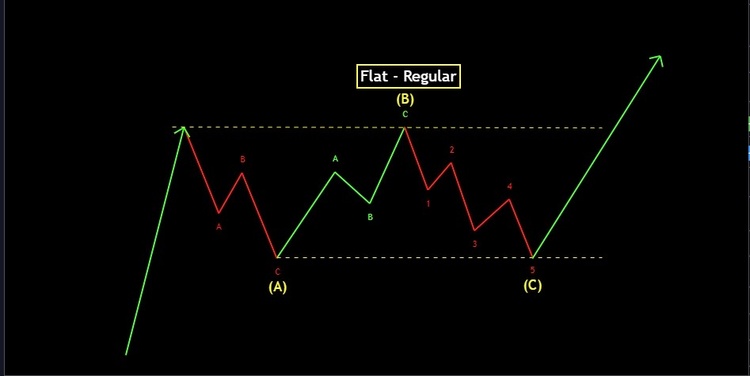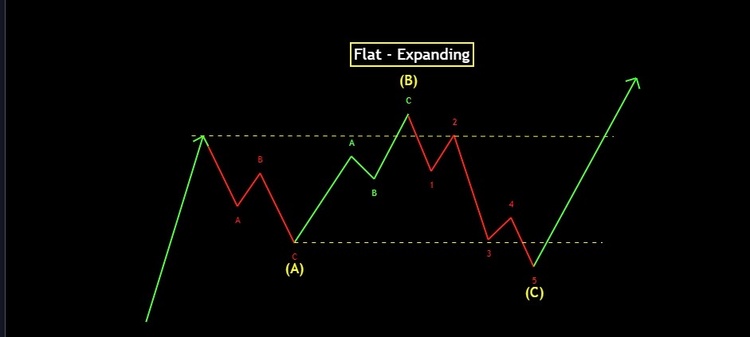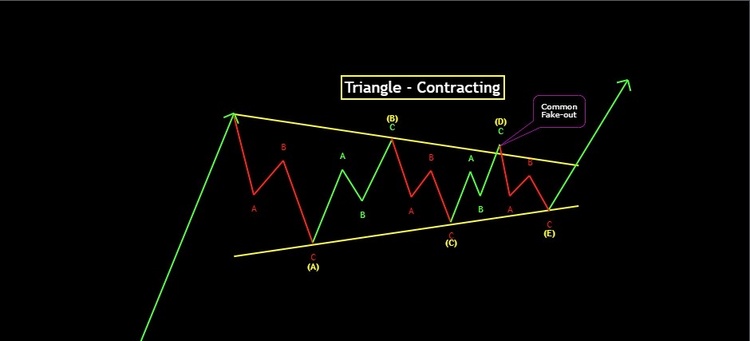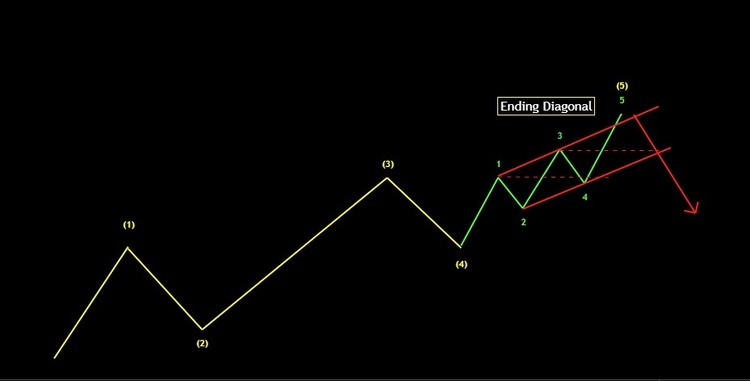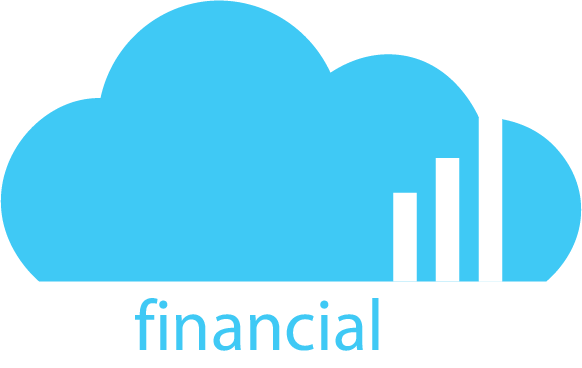Welcome to the lessons developed by Avery, aka ATMTrades. This page has the information which will build a basic understanding of Elliot Waves and how to apply them to your daily trading. If you have questions message Avery in any room on our discord.
Elliot Waves
What is Elliot Wave?
Elliott Wave Theory is a method of market analysis, based on the idea that the market forms the same types of patterns on a smaller timeframe (lesser degree) that it does on a longer timeframe (higher degree) which is known as fractals. These patterns provide clues as to what might happen next in the market. According to the theory, it does not depend on what timeframe you are analyzing; market movements follow the same types of patterns. (Which is why you will see Elliot Wave traders with different targets even with the same Bullish or Bearish Sentiment)
The theory was developed by R.N. Elliott in the 1930s and was popularized by Robert Prechter in the 1970s. It claims that crowd behavior produces patterns and trends we see in markets; wave patterns, as defined by Elliott, is the physical manifestation of mass psychology in our world. These patterns not only appear in markets but anywhere humans make decisions in mass.
Examples might include housing prices, fashion trends or how many people choose to ride the subway each day.
In this section, I will be introducing the rules of wave formation and the various patterns seen in Elliott Wave Theory. By the end of this section, you should have a good grasp on how Elliott Wave is applied to the stock market and be able to form your own Elliott Wave analysis on charts. However, keep in mind that it takes A LOT of practice to confidently apply Elliot Wave Theory to your technical analysis. Personally it took me 6 months to be confident with my understanding of Elliot Wave. Hopefully after you finish this section of the course it wont take even half the time to get to an advanced level as I had little guidance besides google to assist me on the way.
What you need to do is practice. This is imperative to for you to get to the next level of understanding the fastest way possible and the only way. I don’t care if you’re just watching a ticker or not when you first begin practicing. Chart everything in sight, whether you have $0 invested or 100k invested. You have to practice, after all practice makes perfect. Practice charting Elliot Wave because you want to learn. Practice it because you want to be better than everyone else. Practice it because you want your targets to be so accurate, that it comes down to a penny difference between your actual target and where the move ends. The more repetitions the better and this doesn’t just apply for Elliot Wave. This applies to every single method I have taught you throughout this course. You want to be so good at technical analysis that you can just look at a chart and not even have to draw the patterns to know what you’re looking at.
Key rules you NEED to Understand.
Wave 2 cannot retrace > 100% of wave 1
Wave 3 cannot be the Shortest wave
Wave 4 cannot enter the price territory of the wave 1 high. (The only exception is in diagonals)
If wave 2 is a steep correction. Wave 4 must be a flat correction. If wave 2 is a flat correction. Wave 4 must be a steep correction.
- Wave two tends to be a steeper correction more times than not.
- Wave four tends to be a flat correction more often times than not.
- Wave 1 always has a i-ii(1-2) count followed by a leading diagonal
- Wave 3 Will be the longest, and strongest of the 5 waves
- Wave 3 typically extends 161% or greater than that of wave 1
- Wave 5 always ends with an ending diagonal.
- Wave 5 can either be measured as a 161% extension of wave 3, or a 200% extension of wave 1
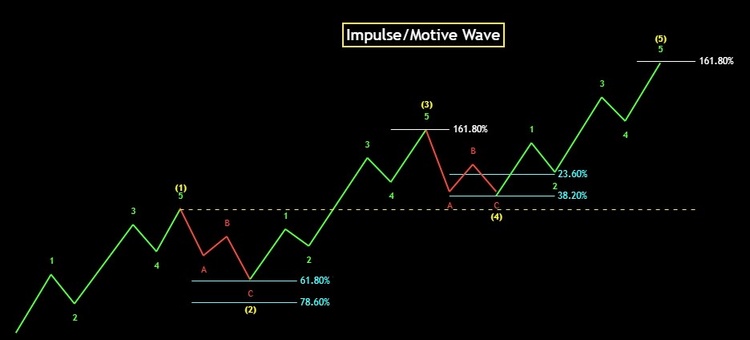
Important Terminology to Understand
Grand Super Cycle (Daily-All Time)** – [I] [II] [III] [IV] [V] – [A] [B] [C]
Super Cycle – (I) (II) (III) (IV) (V) – (A) (B) (C)
Cycle – [I] [II] [III] [IV] [V] – [A] [B] [C]
Primary** – [1] [2] [3] [4] [5] – [A] [B] [C]
Intermediate – (1) (2) ( ) (4) (5) – (A) (B) (C)
Minor – 1 2 3 4 5 – A B C
Minute** – [i] [ii] [iii] [iv] [v] – [a] [b] [c]
Minuette – (i) (ii) (iii) (iv) (v) – (a) (b) (c)
Sub-Minuette (smallest time frames 15m-1hour) – i ii iii iv v – a b c
** Degrees are noted with circles on the chart instead of brackets
Law of Alternation – If wave 2 is a sharp correction, wave 4 will usually be a Side-ways (flat) correction, and vice versa.
Corrective wave – A three wave pattern, or combination of three wave patterns, that moves in the opposite direction of the trend of one larger degree.
Diagonal Triangle (Ending) – A wedge shaped pattern containing overlap that occurs only in fifth or C waves. Subdivides 3 up (wave 1) – 3 down (wave 2) – 3 up (wave 3) – 3 down (wave 4) – 3 up (wave 5).
Diagonal Triangle (Leading) – A wedge shaped pattern containing overlap that occurs only in first or A waves. Subdivides 5 up (wave 1) – 3 down (wave 2)- 5 up (wave 3) – 3 down (wave 4) – 5 up (wave 5).
Double Three – Combination of two simple sideways corrective patterns, labeled W and X, separated by a corrective wave labeled Y.
Double Zigzag – Combination of two zigzags, labeled W and X, separated by a corrective wave labeled Y.
Law of Equality – In a five-wave sequence, when wave three is the longest, waves five and one tend to be equal in price length.
Expanded Flat – Flat correction in which wave B enters higher price territory relative to the Preceding impulse wave. In this case which is more common than a perfect flat. C can dip lower than A
Flat – Sideways correction labeled A-B-C. Subdivides 3(A) – 3(B) – 5(C).
Impulse Wave – A five wave pattern that subdivides 5 up (Wave 1) – 3 down (Wave 2) – 5 up (Wave 3) – 3 down (Wave 4) – 5 up (Wave 5) and contains no overlap.
One-two, one-two – The initial development in a five wave pattern, just prior to acceleration at the center of wave three.
Overlap – The entrance by wave four into the price territory of wave one. Not permitted in impulse waves and can cause minor or a major invalidation of your wave count.
Previous Fourth Wave – The fourth wave within the preceding impulse wave of the same degree. Corrective patterns typically terminate in this area.
Sharp Correction (Commonly occurs in wave 2) – Any corrective pattern that does not contain a price extreme meeting or exceeding that of the ending level of the prior impulse wave; alternates with sideways correction.
Wave 1
Wave 1 in an impulse wave typically has a structure known as a leading diagonal for wave 1 of 1.
Leading diagonals have a 5 sub wave structure that move in small fractals going 5-3-5-3-5 for wave 1 of 5
Further more, leading diagonals have a strict rule set to remain valid.
Contracting Leading Diagonal Rules
Wave 1
Should have a 5 wave Impulse structure.
Wave 2
CANNOT surpass the start of wave 1
Wave 3
MUST go beyond the high of wave 1 and is the longest wave of 5
Wave 4
CANNOT surpass the the high of wave 1
Wave 5
CANNOT truncate and must surpass the wave 3 high.
Expanding Leading Diagonal
Sub-divides into 5 waves
5-3-5-3-5 Wave Structure
3-3-3-3-3 Wave structure
Wave 1
Since this is a expanding ending diagonal Wave 1 will be the shortest wave of the 5 as opposed to wave 5.
Will make an Impulse 5 wave move and is apart of the ZZ Family.(Zig-Zag)
Once wave 1 peaks this will be the top resistance trend line, but it isn’t confirmed until Wave 3 highs are in.
Wave 2
CANNOT retrace beyond the start of wave 1.
Typically retraces 61.8% or 78.6% of wave 1
Will make an Impulse 5 wave move and is apart of the ZZ Family.(Zig-Zag)
(Take your Fib retracement tool and measure from wave 4 of wave 1, to wave 5 of wave 1 highs, then set the 100% level to the lows of your measurement)
When Wave 2 finds it’s bottom on fib support this will now be your support trend line but isn’t confirmed until Wave 4 is in.
Wave 3
With-in the ending Diagonal Wave 3 Cannot be the shortest wave of the 5.
It should be longer than Wave 1 but shorter than Wave 5
Typically extends 121%, 141%, 161.8%(Common) or 200% of Wave 1
Will make an Impulse 5 wave move and is apart of the ZZ Family.(Zig-Zag)
(Take your Fib retracement tool and measure from wave 4 of wave 1, to wave 5 of wave 1 highs, then set the 100% level to the highs of your measurement)
Wave 4
Will be Longer than wave 2.
CANNOT go past the low of Wave 2, and Will go slightly lower than the Wave 1 high.
Typically retraces 61.8% or 78.6% of Wave 3.
Will make a 5 wave move and is apart of the ZZ Family.(Zig-Zag)
Wave 5
Will be the Longest wave of the 3 impulse waves.
Will make an Impulse 5 wave move and is apart of the ZZ Family.(Zig-Zag)
Typically extends 121%, 141%, 161.8%(Common) or 200% of Wave 3
(Take your Fib retracement tool and measure from Wave 3 low to Wave 3 highs, then set the 100% level to the highs of your measurement)
Can Overshoot(Blow off the top) of the upper-trend line which is a common occurrence.
CANNOT truncate as it will be the longest wave of the 3 impulse waves so it should pass wave 3 highs.
After the leading diagonal for wave 1 of 5 has completed Wave 2 should follow with the highest probable target being a 50%, 61.8%, or 78.6% retrace.
(61.8% and 78.6% are the most common Wave 2 Targets)
Wave 2 - Impulsive Corrective Wave
Corrective waves will take you the longest to get a grasp of. Reason being is that they can take form in many different ways, while also being very complex if they chose to do so. With that in mind be patient and practice charting corrective waves as much as possible so your eye can be trained to understand what is developing in front of you.
All corrective waves tend to end with a triangle (flag) as a key indicator the correction is complete.
ALWAYS KEEP THE RULE OF ALTERNATION IN MIND WHEN COUNTING CORRECTIVE WAVES.
If Wave 2 is a flat/Triangle(Flag), Wave 4 will be a steep ZZ correction.
If Wave 2 is a steep ZZ correction, Wave 4 will be a flat/Triangle(Flag)
Key Wave 2 rules
Wave 2 Cannot surpass the length of Wave 1
Wave 2 Typically retraces to the 50%, 61.8%, 78.6% fib measurement of wave 1
Measure these fibs from the low to the high of wave 1 with 0% at the high.
Corrective waves are Always drawn with the alphabet and not numbers i.e. ABC, ABCDE, WXY, WXYXZ
Remember that since this is a corrective impulse wave it can take shape in several different forms such as a:
Zig-Zag
Flat – Regular
Flat – Expanded
Flat – Running
Double Combo
Triple Combo
Double Zig-Zag
Triple Zig-Zag
Triangle – Contracting
*Reference corrective wave glossary for definitions*
Wave 2 typical is a Zig-Zag, Double Zig-Zag, or a Triple Zig-Zag
These corrective waves belong to the ZZ Family (Zig-Zag Family)
Which includes: Zig-Zag, Double Zig-Zag – (WXY), or a triple Zig-Zag (WXYXZ)
Zig-Zag – Must correct Sharply
The most Common ZZ of the family.
*Zig-Zag rules to follow*
Sub-divides into 3 waves.
ABC 5-3-5 structure.
Wave B CANNOT retrace beyond the start of Wave A.
Wave C Will almost always finish below the end of Wave A.
Wave C can truncate in rare cases.
Wave A
Wave A of C moves as an Impulse Wave/leading diagonal.(aka a Falling Wedge). This means there is a 5 wave movement opposite of the overall trend.
Wave B
Wave B of C moves within the ZZ Family (Most Common), Flat(ABC), combo, or triangle.
Wave B typically retraces 38.2%, 50%, 61.8% or 78.6% of wave A (Use fibs to measure the length of wave A with 0% at the low)
Wave B will move in sub-divisions of 5-3-5 (ABC)
Wave B CANNOT retrace more than 100% of Wave A.
Wave C
Wave C of C moves as an Impulse Wave/Ending Diagonal (aka a Falling Wedge) much like A, with a 5 wave movement opposite of the overall trend.
Wave C typically will see an extension of Wave A to the 61.8%, 78.6%, 100%, or 121% fib of Wave A. (Use fibs to measure the length of wave A with 100% at the low then apply the above fibs for targets for Wave C)
Wave C commonly moves beyond the low of Wave A
Wave C in rare cases can truncate, again this is rare like any other truncation.
Double Zig-Zag(WXY) – Must be a sharp correction
Double Zig-Zags are less common than a Zig-Zag but more Common than a Triple Zig-Zag
Double Zig-Zags are simply a larger version of a Zig-Zag.
*Double Zig-Zag rules to follow*
Sub-divides into 5 waves
Has a 3-3-3 structure.
(ABC(down (W))
(ABC(up (X))
(ABC(down (Y))
*sub-divided as 5-3-5*
Located in:
Impulse Wave 2
Impulse Wave 4
Zig-Zag Wave B
Flat Wave A
Flat Wave B
Triangles can be in any wave
Diagonal 3-3-3-3-3 and can be in any wave
Double Combo
Triple Combo
Wave W and Y Must be a simple Zig-Zag
Wave X CANNOT go past the start of Wave W
Wave W
So Wave W is sub-divided as ABC, and the ABC movement within wave W is a Zig-Zag 5-3-5 *See Zig-Zag above*
Wave X
Wave X will take shape as a ZZ family, Flat, Combo, Triangle moving in ABC form.
Wave X typically retraces 38.2%,50% of Wave W.
Wave X CANNOT surpass Wave W.
Wave Y
Wave Y will take shape as a Simple Zig-Zag much like Wave W. *See Wave W or Zig-Zag above*
Wave Y typically extends 61.8%, 100%, 121%, or 161.8% of Wave W (Use fibs to measure length of wave W with 100% at the lowest price point)
Triple Zig-Zag (WXYXZ) – Must be a sharp correction
A Triple Zig-Zag is the most rare of the Zig-Zag family.
Triple Zig-Zags are simply a larger version of a Double Zig-Zag.
*Triple Zig-Zag Rules to follow*
Sub-divides into 5 waves
Structures as 3-3-3
Located in:
Impulse Wave 2
Impulse Wave 4
Zig-Zag Wave B
Flat Wave A
Flat Wave B
Triangles can be in any wave
Diagonal 3-3-3-3-3 and can be in any wave
Double Combo
Triple Combo
Wave W, Y and Z Must be a simple Zig-Zag
Wave X CANNOT go past the start of Wave W or Y
Wave W
HAS to be a Zig-Zag and is sub-divided as ABC. *See Zig-Zag above*
Wave X
Can take many shapes such as a ZZ, Flat, or Combo
Typically retraces 38.2%, or 50% of Wave W.
Wave X CANNOT retrace beyond Wave W.
Wave Y
HAS to be a simple Zig-Zag *See Zig-Zag above*
Typically extends 61.8%, 100%, 121%, or 161.8% of Wave W.
(Measure the fibs from the start to the bottom of Wave W with the 100% being at the lowest price point of W)
Wave X
Can take shape as a ZZ, Flat, Combo, Triangle
typically retraces 38.2%, or 50% of Wave Y.
CANNOT retrace past the start of Wave Y.
Wave Z
HAS to be a simple Zig-Zag *See Zig-Zag above*
Typically extends Typically extends 61.8%, 100%, 121%, or 161.8% of Wave Y.
(Measure the fibs from the start to the bottom of Wave Y with the 100% being at the lowest price point of Y)
Wave 3
In my book I classify this as the Golden Wave. Reason being is that wave 3 of 5 is the the strongest and most explosive wave found in an impulse cycle.
This is also the longest wave in terms of price and time between the 5 waves. Typically in wave 3 there will be major catalyst(s) to propel this wave in a very aggressive manner whether that be breaking news, price upgrades or earnings for example.
This wave is typically the easiest to located because wave 1 and 2 have already established themselves within the cycle.
If you are late to the party, and notice extremely strong price movement whether that be engulfing candles, gaps between sessions, or strong continuation following the current trend. Chances are this is wave 3, and before rushing to join the party be sure to measure out your fib extensions to see if there is still time to catch this wave.
Rules/Guidelines of Wave 3
Sub-divides into 5 waves
Structures as 5-3-5-3-5
Wave 3 must go beyond the high of wave 1.
Wave 3 must be the longest wave in terms of price and time between waves 1-3-5.
Wave 3 Typically extends to the 121%, 141%, 161%(Most common extension), and 200% of wave 1. In extreme cases the 261%, 300%, 361%, 400%, 461% fib. extensions can be the next targets after surpassing the 200% mark which again is rare for this to happen.
Wave 3 of 3, also known as “A third of a Third” is the strongest wave in the entire impulse cycle. Within this wave there is a strong chance you will see these catalysts mentioned above taking place thrusting this wave to new highs in a very aggressive manner.
Wave 3 Examples
Facebook 4HR Wave 3 of 3
Here is a textbook example of the power behind wave 3.
FB found cycle Wave 2 support at 207.13, the 38.2% fib retrace level.
After this support was found there was a very strong reversal made pushing FB to the 250 level ($50 Move.) Shortly after this high was made FB proceeded to make a high and tight bull flag an exploded off a very nice ER creating a nice gap up move to build off of.
Notice how ER conveniently fell within Wave 3 of 3.
After the ER report FB again made another high and tight bull flag, and then made another bullish move off of FB reels news (Their Tik-Tok competitor) which caused more aggressive price movement to new highs.
After the FB reels excitement came to end we saw a nice correction before more news dropped for Instagram (owned by FB) saying that they partnered with Shopify for seamless shopping straight from Instagram’s platform causing FB to again rip to new All Time Highs to complete wave 3.
Zoom Cycle Wave 3
In this 4HR chart view of Zoom, you are looking at wave 5 on the Primary count and wave 5 of the Cycle count as well.
Now to zoom in a bit here lets examine the Primary count noted in baby blue.
ZM made a nice reversal off of the Daily demand zone of our Cycle wave 4 target and proceeded to create an ascending bull flag for waves 1 and 2. The trading session the day of zoom’s ER the bull flag was broken with two extremely bullish engulfing candles hinting at the possible upside to come at session close.
Sure enough Zoom had an out of this world ER that caused the price of this companies stock to leave the planet earth, and of course this was right in the dead center of wave 3.
These are just a few examples of how catalysts conveniently line-up with wave 3 and more importantly with wave 3 of 3 as well. By finding the appropriate count preceding this wave you can more often times than not get ahead of the headlines and be prepared to catch this move before it even happens.
Look at Wave 3 as your own insider providing you with pivotal clues to what may be coming next.
Wave 3 is my favorite wave to trade between the 5. You have typically have high volume providing the most liquidity possible, along with it being powered behind catalyst to fuel the rocket ship.
Wave 4 - Impulsive Corrective Wave
As stated in the Wave 2 section. Corrective waves will take you the longest to get a grasp of. Reason being is that they can take form in many different ways, while also being very complex if they chose to do so. With that in mind be patient and practice charting corrective waves as much as possible so your eye can be trained to understand what is developing in front of you.
Remember, all corrective waves tend to end with a triangle (flag) as a key indicator the correction is complete.
ALWAYS KEEP THE RULE OF ALTERNATION IN MIND WHEN COUNTING CORRECTIVE WAVES.
If Wave 2 is a flat/Triangle(Flag), Wave 4 will be a steep ZZ correction.
If Wave 2 is a steep ZZ correction, Wave 4 will be a flat/Triangle(Flag)
Key Wave 4 rules
Wave 4 Cannot surpass the High of Wave 1
Wave 4 Typically retraces to the 23.6%, 38.2% fib measurement of wave 3
Measure these fibs from the low to the high of wave 3 with 0% at the high.
Corrective waves are Always drawn with the alphabet and not numbers i.e. ABC, ABCDE, WXY, WXYXZ
Remember that since this is a corrective impulse wave it can take shape in several different forms such as a:
Zig-Zag
Flat – Regular
Flat – Expanded
Flat – Running
Double Combo
Triple Combo
Double Zig-Zag
Triple Zig-Zag
Triangle – Contracting
*Reference corrective wave glossary for definitions*
Wave 4 typical is a Flat – Regular, Flat – Expanded – Flat – Running, Triangle
Flat – Regular (less common sideways price movement)
Sub-divides into 3 waves
Structures as 3-3-5
Wave B must retrace 90-100% of Wave A highs.
Wave C Should go to the same lows as Wave A lows. (It can extend slightly lower without being invalid)
Located in:
Impulse Wave 2
Impulse Wave 4 (Most Common)
Zig-Zag Wave B
Flat Wave A
Combo Correction Waves W, Y, Z or X
Double & Triple ZigZag Wave X
Wave A
Sub-divides into 3 waves(ABC)
Can be the ZZ family, flat, or combo
Typically retraces 23.6% or 38.2% of Wave 3
(Take your Fib retracement tool and measure wave 3 high to low and set the 100% fib to the high)
Wave B
Sub-divides into 3 waves(ABC)
Typically apart of the ZZ family moving in a 5-3-5 manner
Should retrace 90-100% of Wave A
Wave C
Sub-divides into 5 waves
Will be Impulsive and form an ending diagonal(Falling Wedge)
Typically retraces to the same level as Wave A to the 23.6% or 38.2% retrace of Wave 3.
(Take your Fib retracement tool and measure wave 3 high to low and set the 100% fib to the high)
Flat – Expanded – (Common sideways price movement)
Rules to follow
Sub-divides into 3 waves
Structures as 3-3-5
Wave B must retrace more than 100% of Wave A highs.
Wave C must extended beyond than Wave A lows.
Located in:
Impulse Wave 2
Impulse Wave 4 (Most Common)
Zig-Zag Wave B
Flat Wave A
Combo Correction Waves W, Y, Z or X
Double & Triple ZigZag Wave X
Wave A
Sub-divides into 3 waves(ABC)
Can be the ZZ family, flat, or combo
Typically retraces 23.6% or 38.2% of Wave 3
(Take your Fib retracement tool and measure wave 3 high to low and set the 100% fib to the Low)
Wave B
Sub-divides into 3 waves(ABC)
Typically apart of the ZZ family moving in a 5-3-5 manner
Typically runs past the high of Wave A to the 121% or 161% extension of Wave A.
(Take your Fib retracement tool and measure wave A high to low and set the 100% fib to the high)
Wave B must extend more than 100% of Wave A highs.
Wave C
Sub-divides into 5 waves
Will be Impulsive and form an ending diagonal(Falling Wedge)
Typically extends below Wave A‘s low to the 121% or 161% extension of Wave A.
(Take your Fib retracement tool and measure wave A high to low and set the 100% fib to the low)
Wave C must extended beyond the Wave A lows.
Flat – Running (Uncommon Sideways price movement)
Sub-divides into 3 waves
Structures as 3-3-5
Wave B must retrace more than 100% of Wave A highs.
Wave C does not extended beyond Wave A lows.
Located in:
Impulse Wave 2
Impulse Wave 4 (Most Common)
Zig-Zag Wave B
Flat Wave A
Combo Correction Waves W, Y, Z or X
Double & Triple ZigZag Wave X
Wave A
Sub-divides into 3 waves(ABC)
Can be the ZZ family, flat, or combo
Typically retraces 23.6% or 38.2% of Wave 3
(Take your Fib retracement tool and measure wave 3 high to low and set the 100% fib to the Low)
Wave B
Sub-divides into 3 waves(ABC)
Typically apart of the ZZ family moving in a 5-3-5 manner
Should extend to 121% or 161.8% of Wave A
(Take your Fib retracement tool and measure wave A high to low and set the 100% fib to the high)
Wave C
Sub-divides into 5 waves
Will be Impulsive and form an ending diagonal(Falling Wedge)
Typically retraces 61.8% or 100% of Wave A
(Take your Fib retracement tool and measure wave A high to low and set the 100% fib to the low)
Triangle(flag) – Contracting
Rules to follow
Sub-divides in 5 waves
Structures as 3-3-3-3-3
Wave B retraces 61.8%-161.8% of Wave A
Wave C retraces 61.8%-78.6% of Wave A
Wave D retraces 61.8% of Wave B
I typically don’t measure the fibs for the waves inside the triangle. What I do measure is that Wave A retraces 23.6%-38.6% of wave 3.
Wave C CANNOT go past the end of Wave A
Wave D CANNOT go past the end of Wave B
Wave E CANNOT go past the end of Wave C
ABCDE waves must be simple Zig-Zags. Wave E is the only exception where this wave can form a complex corrective wave.
Located in:
Impulse Wave 4
Zig-Zag Wave B
Double Combo Wave Y
Triple Combo Wave Z
Double Zig-Zag Wave X
Triple Zig-Zag last Wave X
Wave 5
The 5th and Final wave to an Impulse cycle. Look at this wave as the 4th quarter or the 9th inning. This is your final chance to realize profits to their maximum potential before a rather large correction takes place.
Wave 5 sub-divides into 5 waves just like Wave 1 and Wave 3.
It also structures exactly like the other impulse waves(1 and 3) as well with a 5-3-5-3-5 wave movement.
Wave 5 will Almost always extend beyond wave 3 after finishing the Wave 4 correction.
The exception is when Wave 5 truncates and fails to go beyond wave 3. Truncation are uncommon and usually require an external factor beyond the charts to cause a truncation and reverse the trend earlier than projected.
There are a couple of routes you can take to measure wave 5.
Option 1: Measure the price length of Wave 1, then apply that price range to the support level of wave 4 after it finds the 23.6% or 38.2% fib and that will be the measured move for Wave 5 as Wave 1 = Wave 5 almost always.
Option 2: Measure the length of Wave 1, then apply the fib retracement tool and reverse the fibs so 100% is at the high of wave 1 and apply the 200% extension and use that was your wave 5 target.
Option 3: Apply your fib retracement tool on Wave 3 low and high and then set the 100% level to wave 3 highs. Once your fibs are set, your targets for wave 5 are the 121%, 141%, 161%(Most common), and 200% marks.
Ending Diagonal
What separates wave 5 from the other waves is that as it approaches its peak it begins to create an Ending Diagonal.
Ending Diagonals don’t just appear at the end of the whole Cycle. They appear at the end of Wave 1 and Wave 3 also as they of course end at wave 5 as well.
Rules of an ending diagonal
Sub-divides into 5 waves
Structures as a 3-3-3-3-3
Located In
The end of Impulse Wave 1
The end of Impulse Wave 3
The end of Impulse Wave 5
Zig-Zag Wave C
Flat Wave C
Can be a contracting or expanding channel
Contracting Ending Diagonal (Common) – Converging trend lines
Sub-divides into 5 waves
3-3-3-3-3 wave structure
Wave 1
Since this is a contracting ending diagonal Wave 1 will be the longest wave of the 5 as opposed to wave 3.
Will make an Impulse 5 wave move and is apart of the ZZ Family.(Zig-Zag)
Once wave 1 peaks this will be the top resistance trend line, but it isn’t confirmed until Wave 3 highs are in.
Wave 2
CANNOT retrace beyond the start of wave 1.
Typically retraces 61.8% or 78.6% of wave 1
Will make an Impulse 5 wave move and is apart of the ZZ Family.(Zig-Zag)
(Take your Fib retracement tool and measure from wave 4 of wave 1, to wave 5 of wave 1 highs, then set the 100% level to the lows of your measurement)
When Wave 2 finds it’s bottom on fib support this will now be your support trend line but isn’t confirmed until Wave 4 is in.
Wave 3
With-in the ending Diagonal Wave 3 Cannot be the shortest wave of the 5.
It should be shorter than Wave 1 but longer than Wave 5
Typically extends 121%, 141%, 161.8% of Wave 1
Will make an Impulse 5 wave move and is apart of the ZZ Family.(Zig-Zag)
(Take your Fib retracement tool and measure from wave 4 of wave 1, to wave 5 of wave 1 highs, then set the 100% level to the highs of your measurement)
Wave 4
Will be shorter than wave 2.
CANNOT go past the low of Wave 2, and Typically stays above the Wave 1 high.
Typically retraces 61.8% or 78.6% of Wave 3.
Will make a 5 wave move and is apart of the ZZ Family.(Zig-Zag)
Wave 5
Will be the Shortest wave of the 3 impulse waves.
Will make an Impulse 5 wave move and is apart of the ZZ Family.(Zig-Zag)
Typically extends 121%, 141%, 161.8%(Common) or 200% of Wave 3
(Take your Fib retracement tool and measure from Wave 3 low to Wave 3 highs, then set the 100% level to the highs of your measurement)
Can Overshoot(Blow off the top) of the upper-trend line which is a common occurrence.
Can also truncate as it is the final wave of the current move.
Extremely similar properties as an leading diagonal for reference:
Expanding Ending Diagonal – (Rare)
Sub-divides into 5 waves
3-3-3-3-3 wave structure
Wave 1
Since this is a expanding ending diagonal Wave 1 will be the shortest wave of the 5 as opposed to wave 5.
Will make an Impulse 5 wave move and is apart of the ZZ Family.(Zig-Zag)
Once wave 1 peaks this will be the top resistance trend line, but it isn’t confirmed until Wave 3 highs are in.
Wave 2
CANNOT retrace beyond the start of wave 1.
Typically retraces 61.8% or 78.6% of wave 1
Will make an Impulse 5 wave move and is apart of the ZZ Family.(Zig-Zag)
(Take your Fib retracement tool and measure from wave 4 of wave 1, to wave 5 of wave 1 highs, then set the 100% level to the lows of your measurement)
When Wave 2 finds it’s bottom on fib support this will now be your support trend line but isn’t confirmed until Wave 4 is in.
Wave 3
With-in the ending Diagonal Wave 3 Cannot be the shortest wave of the 5.
It should be longer than Wave 1 but shorter than Wave 5
Typically extends 121%, 141%, 161.8%(Common) or 200% of Wave 1
Will make an Impulse 5 wave move and is apart of the ZZ Family.(Zig-Zag)
(Take your Fib retracement tool and measure from wave 4 of wave 1, to wave 5 of wave 1 highs, then set the 100% level to the highs of your measurement)
Wave 4
Will be Longer than wave 2.
CANNOT go past the low of Wave 2, and Will go slightly lower than the Wave 1 high.
Typically retraces 61.8% or 78.6% of Wave 3.
Will make a 5 wave move and is apart of the ZZ Family.(Zig-Zag)
Wave 5
Will be the Longest wave of the 3 impulse waves.
Will make an Impulse 5 wave move and is apart of the ZZ Family.(Zig-Zag)
Typically extends 121%, 141%, 161.8%(Common) or 200% of Wave 3
(Take your Fib retracement tool and measure from Wave 3 low to Wave 3 highs, then set the 100% level to the highs of your measurement)
Can Overshoot(Blow off the top) of the upper-trend line which is a common occurrence.
CANNOT truncate as it will be the longest wave of the 3 impulse waves so it should pass wave 3 highs.


